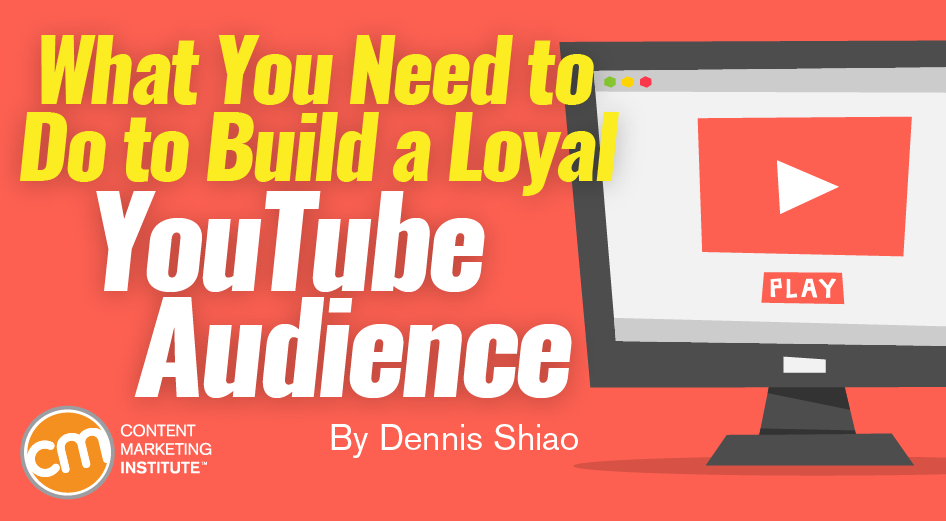YouTube’s success comes from visitors extending their watch time – when the first video is done, the visitor views the next one and the next, and so on. To help keep people watching, YouTube’s algorithm considers starts, watch (time), and sessions. If a visitor starts at the YouTube home page, YouTube displays videos it thinks the visitor would like. According to Tim, “YouTube’s goal is to promote content that gets people back to YouTube, content people actually watch, and then keeps them watching another video and then another video.” Focus on quality, not metadata Metadata (e.g., title, description, tags) on YouTube plays only a small role in the discoverability of videos, Tim says. Whenever Tim watches one of Andre’s videos, he thinks, “Oh, I’m back at home with Andre.” Rituals are repeated interactions or customs that people grow to love and expect from your brand. Know what’s working (and what isn’t) YouTube’s audience retention report is a neat analytics dashboard, showing viewing duration, top videos, and audience retention for each video (e.g., a graph that shows precisely when users stop watching). Build loyalty via a community of shared beliefs. She’s loyal to a handful of YouTube creators and can spend hours on the platform. In addition to the entertainment value, she has shared beliefs with the creators and appreciates their icons and rituals. Are you loyal to creators on YouTube?

My teen daughter has not watched television since elementary school. She gets her news and entertainment from YouTube.
While younger generations account for a lot of views, YouTube is ubiquitous across the generations, attracting 1.9 billion users each month. Every day, people watch over a billion hours of video.
While viewers have an unlimited supply of videos to watch, it’s a different story for marketers. With so much content available, how can creators gain a fair share of users’ attention?
Tim Schmoyer, CEO of Video Creators, offered some insight in his recent Content Marketing World presentation, How to Develop a Loyal YouTube Audience. Unless otherwise noted, images and insights come from his talk.
Think SEO with a twist
The goal of YouTube – like all content marketing initiatives – is to serve the right video to the right person at the right time, Tim says.
Google’s search engine similarly tries to serve the right content at the right time, but there’s an important distinction. Google serves up content like a concierge who seeks to answer a question and get the visitors on their way. YouTube, on the other hand, is like the hotel. It wants visitors to relax, unwind, and stay awhile.
Google views a successful search as one where the visitor doesn’t need to return to the search page. YouTube’s success comes from visitors extending their watch time – when the first video is done, the visitor views the next one and the next, and so on.
To help keep people watching, YouTube’s algorithm considers starts, watch (time), and sessions.

Starts
Starts are the videos that bring people to YouTube – the video that started a visitor’s session.
If a visitor starts at the YouTube home page, YouTube displays videos it thinks the visitor would like. Visitors who are logged into their YouTube account will see recommendations based on viewing history.
When I visited the YouTube home page, it showed recommendations for videos, topics, and channels closely aligned to the topics I watched in the past.
According to Tim, videos that appear on the home page have been successful at starting new sessions for users.
Watch
Watch refers to viewing time. YouTube seeks to recommend videos that have been watched for a longer time. For example, if two videos are both six minutes, but one has an average viewing time of two minutes and the other has been viewed an average five minutes, YouTube will show the latter as a recommended option.
Session
Session refers to the videos that contribute to the longest viewing times. According to Tim, “YouTube’s goal is to promote content that gets people back to YouTube, content people actually watch, and then keeps them watching another video and then another video.”
Focus on quality, not metadata
Metadata (e.g., title, description, tags) on YouTube plays only a small role in the discoverability of videos, Tim says. “Google got really smart a long time ago. They’re like, ‘Just because it has the keyword in the title, the tags, the description, doesn’t necessarily mean that this is the best video to serve.”
Metadata’s impact is greatest when a video is first published. Because YouTube doesn’t know much about the content at this point, it pays attention to the metadata provided. As little as a few days later, however, YouTube can evaluate viewer signals – views, “likes,” watch time, etc. Those signals become more meaningful than creator-provided metadata.
“Your viewers actually determine how well your videos will rank,” Tim says. “So our goal is to make it as easy as possible for our viewers to give the signals to Google that they need to want to promote that video and surface it in front of everyone that they can.”
While you should fill in the metadata fields, spend more time optimizing your video for humans. Focus on the quality of your video. Quality will get people to watch your videos and check out other videos on your channel.
Tim dispels more video SEO myths in this video:
Build a community
Your YouTube channel gained 100 subscribers this month. Congratulations! What Tim might tell you, however, is that subscribers are not necessarily loyal fans. Subscribers may not visit regularly or pay attention when your next video goes live.
Tim urges creators to think…

COMMENTS